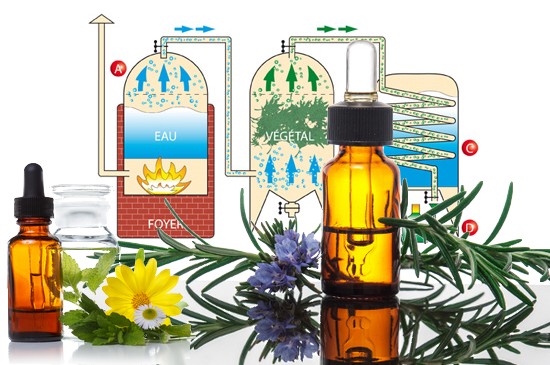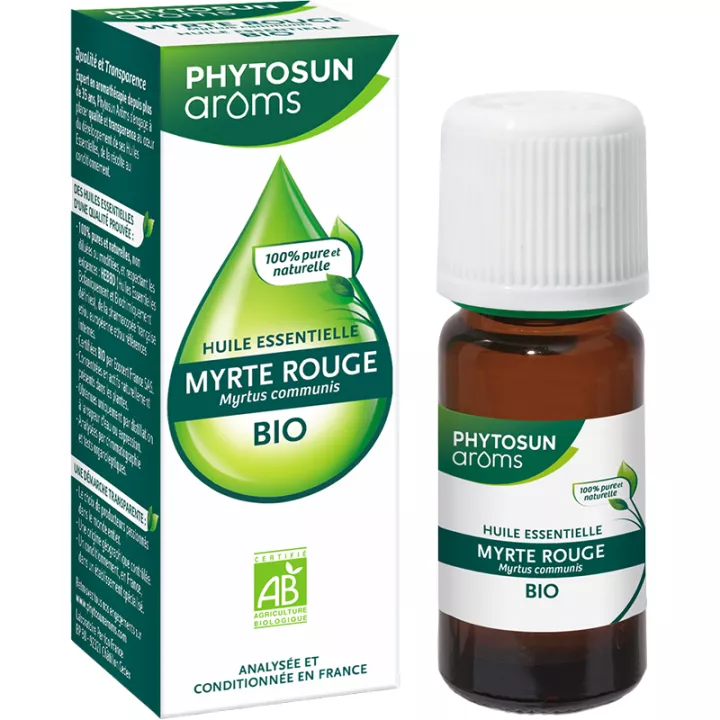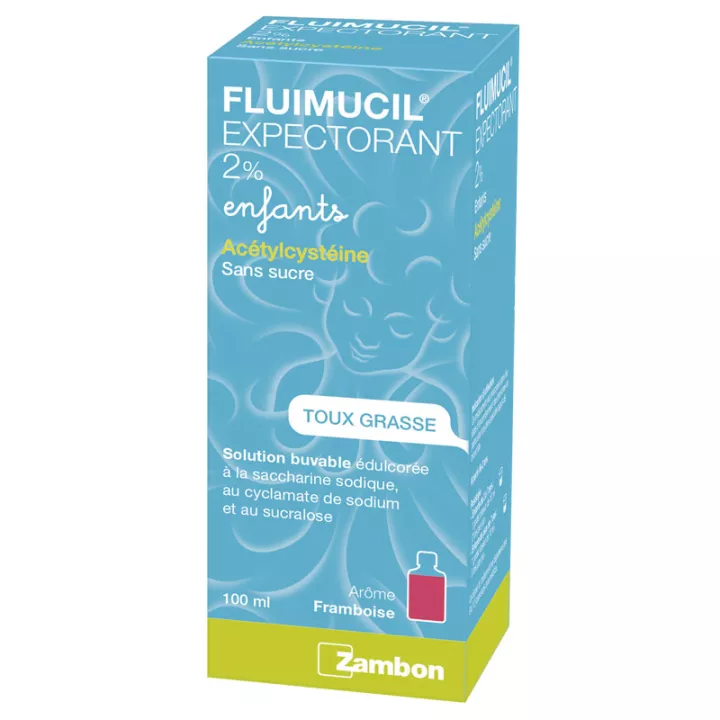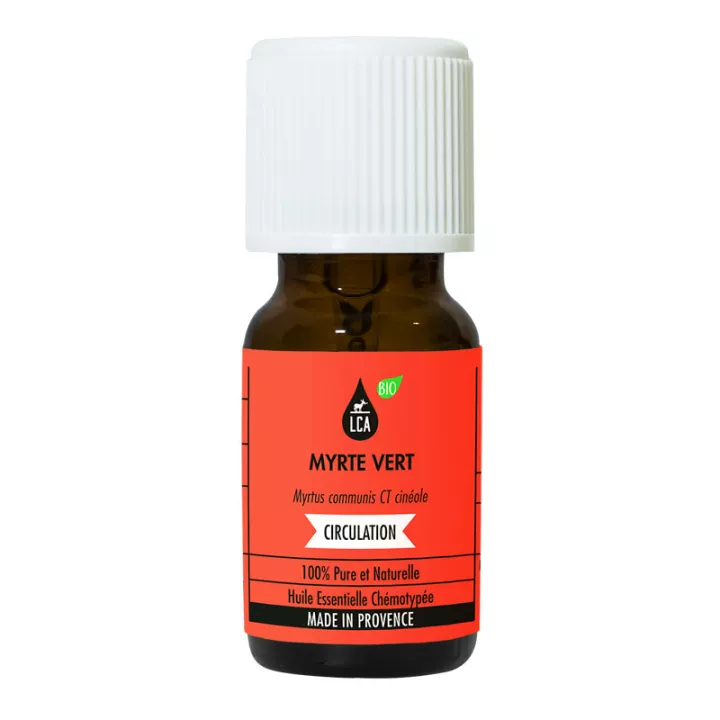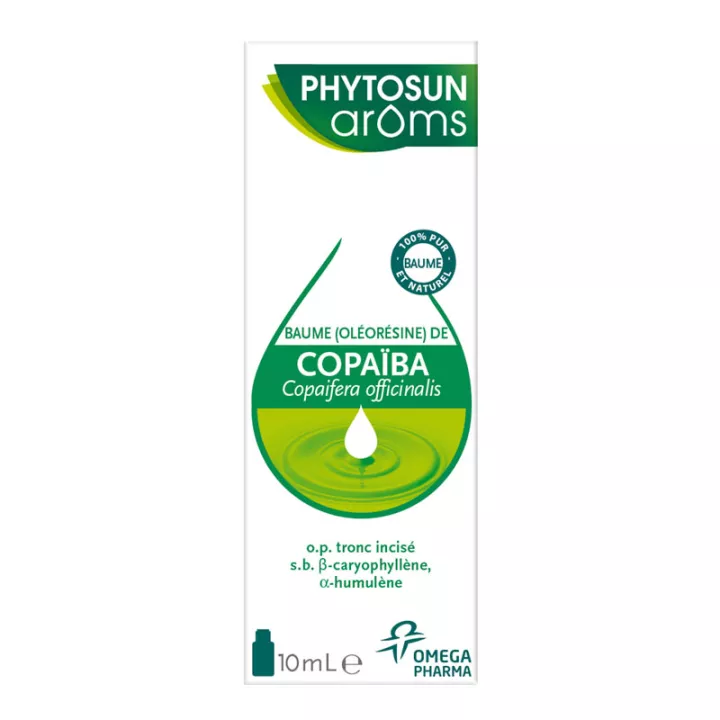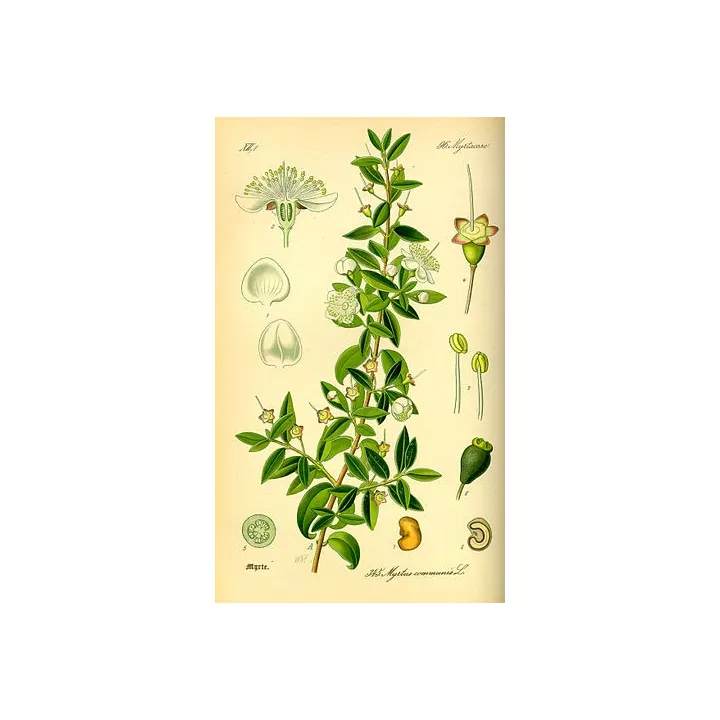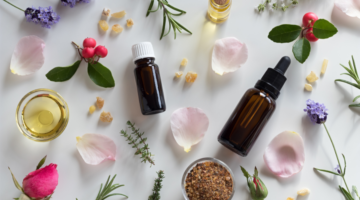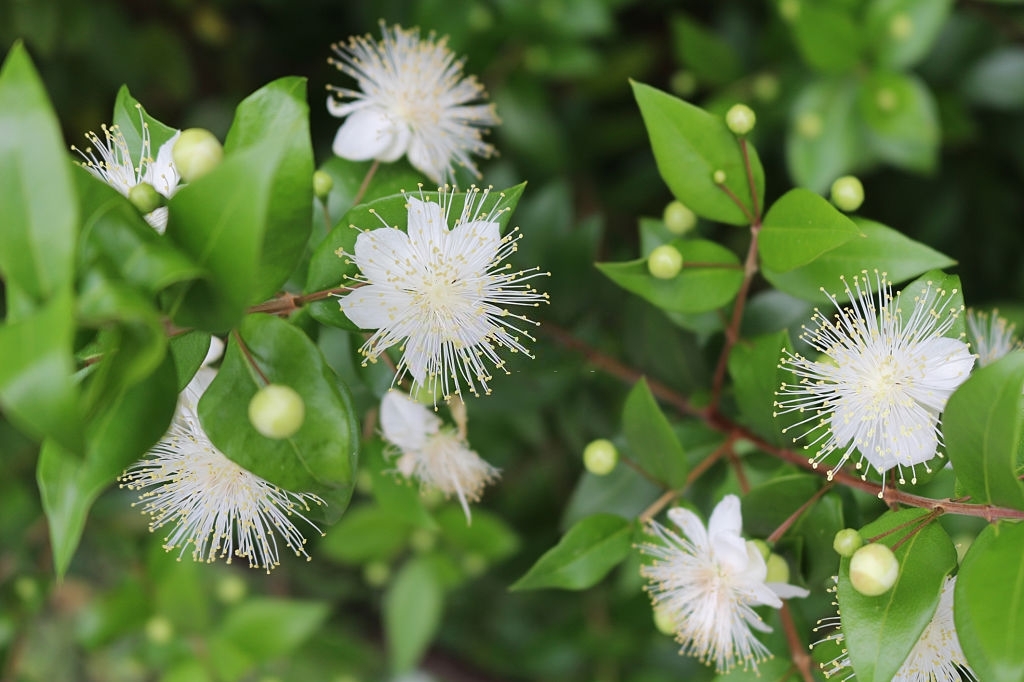What is Phytosun Aroms Huile Essentielle de Myrte Rouge Bio used for ?
Expectorant. Hepatostimulant. Venous and prostatic decongestant. Hormone-like. Skin tonic. Red Myrtle Essential Oil has remarkable expectorant and fluidifying properties on the ENT sphere, helping to relieve the symptoms of sinusitis, bronchitis and other bronchopulmonary infections. It also tones the venous system, relieving heavy legs.
Red Myrtle Essential Oil acts on the ENT and circulatory systems. Bronchitis, sinusitis, sore throat. Hepatitis, liver failure. Cystitis, urethritis, prostatitis, urinary tract infections, amenorrhea, varicose veins, hemorrhoids. Hypothyroidism. Tired, wrinkled, devitalized skin, acne, psoriasis.
Organic Red Myrtle essential oil is obtained by steam distillation of the leaves of Myrtus communis, a shrub native to the Mediterranean basin. Phytosun Aroms ensures that the extraction process complies with strict organic farming standards, guaranteeing the purity and quality of the essential oil. This method preserves all the therapeutic and aromatic properties of the plant, offering a naturally effective product.
Organic Red Myrtle essential oil is rich in active compounds such as α-pinene, 1,8-cineole, limonene and myrtenol. These compounds give the essential oil its varied therapeutic properties, including expectorant, antiseptic, tonic and relaxing effects. The complex chemical composition of the essential oil makes it a versatile remedy for a wide range of ailments and imbalances.
Organic Red Myrtle essential oil has many therapeutic properties beneficial to physical and emotional health. Its main actions include
- Expectorant and mucolytic: It helps clear the respiratory tract by liquefying secretions and promoting their expulsion, making it an effective remedy for coughs, bronchitis and respiratory ailments.
- Antiseptic and antibacterial: fights bacterial and viral infections, helping to prevent and treat respiratory tract and skin infections.
- Tonic and stimulant: It stimulates blood circulation, boosts the immune system and restores energy in cases of fatigue or weakness.
- Relaxing and soothing: It promotes relaxation, soothes tension and relieves stress and anxiety, offering invaluable support for emotional well-being.
The aromatherapy laboratory Phytosun Aroms also offersNiaouli essential oil at the best price in our online pharmacy.
How to use this essential oil
Oral route: Place 2 drops (1 drop for children over 7) on a neutral tablet 3 times a day.
Cutaneous : Use 2 to 5 drops undiluted, or diluted in another vegetable oil, to massage the legs 3 times a day.
Rub or unction affected areas.
Use one drop of grog 2-3 times a day to relieve congestion.
On the skin, as a tissue stimulant, add 1-2 drops to argan or wheat germ oil, as a night treatment.
Possible use: Oily coughs (children > 7 years)
2 drops of Red Myrtle essential oil + 1 drop of Thyme linalol essential oil + 1 drop of Siberian Fir essential oil, 1 drop of this mixture applied to the neck 3-5 times a day.
Other possible uses: Anus circulatory disorders - hemorrhoids (adults)
2 drops of Red Myrtle essential oil + 1 drop of Cistus essential oil + 10 drops of Calophylla vegetable oil, 2 drops of this mixture for local application.
Precautions for use of Red Myrtle essential oil
- Not recommended for pregnant or breast-feeding women.
- For adults only (risk of convulsion in children).
- Do not diffuse (irritating to the respiratory tract).
- Caution in cases of renal insufficiency ( nephrotoxic)
- Do not combine with cortisone, risk of drug interaction
- α-pinene is an enzyme inhibitor, risk of drug interactions, ask your pharmacist for advice
- Not recommended for asthmatics
- Not recommended for animals
- Oral use only on medical prescription
- Not recommended for patients with a history of convulsions or taking anti-epileptic medication
- Not for prolonged use, maximum two consecutive weeks
- Dermocaustic, dilution required
- Caution in hormone-dependent pathologies
What is its composition?
Red Myrtle is a Mediterranean shrub (Corsica, Morocco, Tunisia and Spain). Its flowers are white with numerous stamens, and its leaves are slightly shiny. It is the twigs that are steam-distilled to extract the Essential Oil.
Myrtus communis
o.p. twigs
s.b. 1.8-cineole, a-pinene, myrtenyl acetate, limonene
Origin : Morocco
Recommended synergies of Red Myrtle essential oil
With cineole essential oils (eucalyptus, ravensare...) and pine, fir, in respiratory ailments, for diffusion.
With lemon zest essential oils to protect the liver.
With geranium and palmarosa essential oils for skin care.
In practice: bath - massage - friction - unction - cosmetics - grog - diffusion
